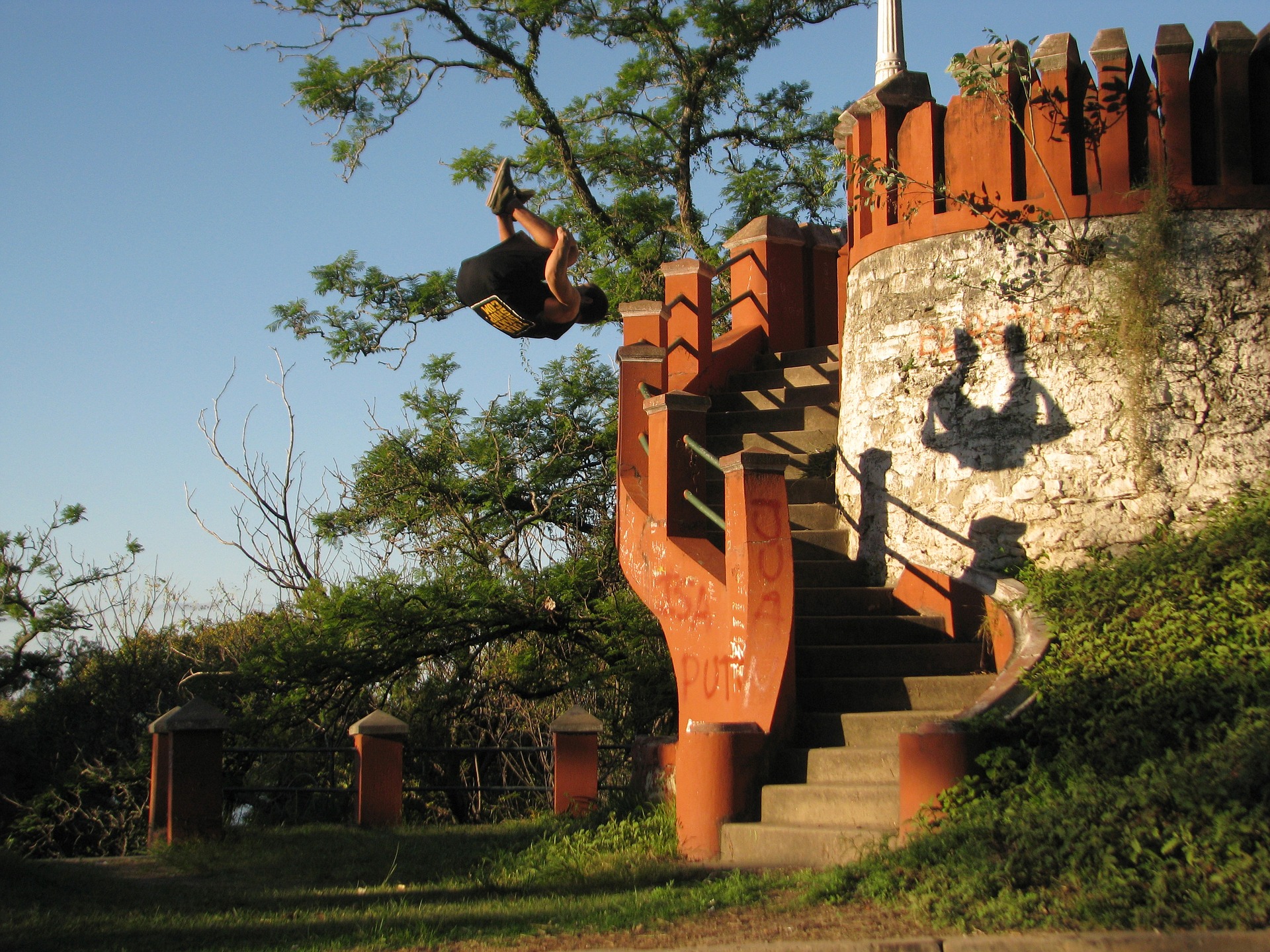Buildering. A portmanteau of “building” and “bouldering”, it describes the act of ascending the exterior of a multi-storey building, usually without any safety equipment.
In recent years, this urban climbing has generated considerable media interest, with stomach-churning demonstrations of insanity becoming a talking point in cities around the world. The public watch in awe as the “Human Fly” and “French Spiderman” succumb to their insatiable impulses to climb ludicrously tall structures without rope or harness, admiring liberation and exhilaration that comes from undertaking an illicit and dangerous activity.
Much like its rock-climbing counterpart, it’s not immediately clear to the sensible person why buildering is appealing. Even if devotees are responding to some primal urge to assess their surroundings from a lofty vantage point, clinging perilously to an edifice seems redundant when you could just take the lift. Amazingly though, these stair-shunning thrill-seekers are part of a wider community of adventurers chomping at the bit to take on any structure, providing it’s free, illegal, and at least 50 feet in the air.
Night Climbing
When engaging in a conversation about buildering (as I’m sure you so often do), you may hear reference to night climbing. Essentially the same principle as buildering, night climbing traditions tend to exclusively concern historic buildings, scaled by students at Oxford and Cambridge universities. As clambering over listed architecture is largely frowned upon by the college authorities, the majority of these explorations happen under the cover of darkness, hence the name.
It’s not entirely clear what spurs this practice. One can only assume that, despite their academic gifts, these privileged young men (and perhaps women, but it seems unlikely) thirstily seek rebellion against a stifling upbringing, and can only be quenched by conquering the highest city apexes.
This suspicion is supported by the trophies that are left to commemorate these expeditions. The gates of Trinity College, Cambridge are supervised by a 17th century sculpture of Henry VIII, who has been relieved of his golden sceptre and now brandishes a chair leg. In 2009, the esteemed King’s College Chapel had its 94-foot spires capped with jolly Santa hats. In 1958 an entire Austin Seven was positioned on the roof of Senate House, and remained there for a week while authorities puzzled over how to possibly return it to the ground (ultimately dismantling it with a blowtorch).
Parkour
Parkour is a close relative, a cousin or half-sibling perhaps, of buildering. While both involve taking treacherous courses across an urbanscape, parkour is actually considered to be a discipline, rather than just an exceptionally hazardous method of exploration. This is, in part, due to the practice being deeply rooted in military training exercises; literally taking its name from the French term parcours du combattant (obstacle course).
In parkour, a participant must negotiate a “complex” environment in the most efficient way possible, and can employ any combination of movements to do so – vaulting, balancing, scrambling on all fours and so on. It’s worth noting the distinction between this and freerunning, in which it’s common for practitioners to add gymnastic flourishes and “tricks” to their stunts. Again, no equipment is permitted, and the idea of self-sufficiency is so entrenched in the parkour ethos that even gloves and footwear are discouraged.
A parkour practitioner is referred to as a “traceur” or “traceuse” (surprisingly neither of these translate to “fruitcake”), and there is no obligation for this sport to be conducted over skyscraper rooftops, where it is so often found. The focus is on the lateral passage as much as the vertical, so natural terrain is a perfectly acceptable training ground, although presumably a gently-rolling countryside is a prohibitively unchallenging landscape.
There are, of course, other ways to reach the top of a building. If you’re reading this because you have pressing high-level maintenance to carry out and don’t want the expense of a professional, I don’t have good news. The average human simply does not have the finger strength required for buildering success, and you will likely find yourself on the ground in a heap, or comically dangling from your soffits in an incredibly undignified manner. Forget about saving costs and invest in some access equipment to make sure the job is done properly. Rent a cherry picker, buy hiLyte Scaffold towers, or just get a ladder, for God’s sake.
This article was written by Olivia Blake.







